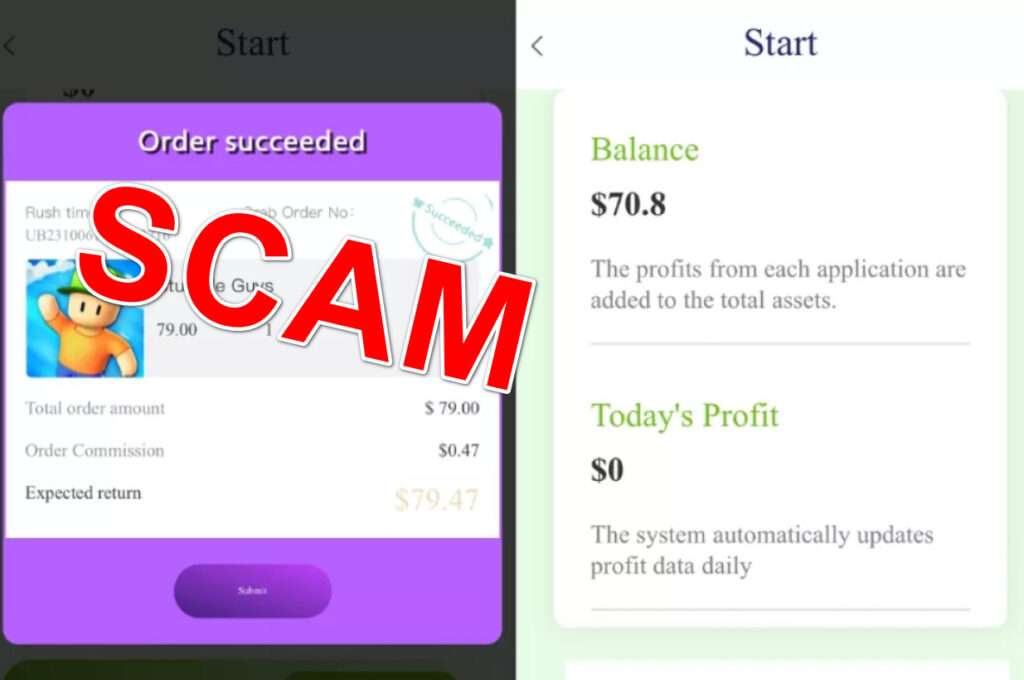Straight North is a well-known digital marketing firm with locations across the United States. Unfortunately, scammers are now impersonating Straight North to lure in victims with fraudulent job offers. This scam results in applicants losing huge sums of money when directed to bogus “training” websites.
In this comprehensive exposé, we will reveal how the Straight North recruitment scam operates, analyze the deceptive tactics used, provide guidance on avoiding being swindled, and supply in-depth advice for those unfortunate enough to have fallen prey.

This Article Contains:
Overview of the Straight North Recruitment Scam
This far-reaching scam begins when targets receive unsolicited messages regarding high paying job opportunities at Straight North, a legitimate company. However, the supposed recruiters are actually scammers exploiting Straight North’ brand recognition.
Victims are directed to fraudulent websites disguised as Straight North’ “training platform” where they must complete tasks and pay escalating fees with the false promise of earning the advertised salaries. In reality, there is no job and victims receive zero payouts.
Here are the key facts to know about this shameful scam built on impersonation and deception:
- Fraudulent Job Offers – Scammers send messages promoting fake jobs at Straight North with generous salaries and benefits to entice victims.
- Familiar Brand Name – Straight North’ legitimacy as a real staffing company tricks victims into trusting the opportunity.
- Bogus Training Platforms – Victims are funnelled to fake “training” websites where they must complete tedious tasks under the guise of job preparation.
- Upfront Fees – Scammers insist victims pay exorbitant upfront fees to access higher paying tasks with the false promise it will lead to the advertised payout.
- No Payouts – No matter how many tasks are done or how much money is paid in fees, victims receive zero compensation.
- Well Planned Scam – Sophisticated social engineering and psychological manipulation keeps victims investing time and money while ignoring red flags.
- Huge Global Impact – These interlinked scams have already stolen millions from struggling job seekers across North America, Europe, Australia and beyond.
This deceitful scam built on impersonation has ruined families and stripped people’s savings with no remorse. Spreading awareness is critical to containing it.
How the Straight North Recruitment Scam Works
The masterminds behind this scam intelligently leverage Straight North’ brand recognition to manipulate trusting job seekers through a fraudulent multi-step process. Here is an in-depth look at how it ensnares victims:
Step 1 – Initial Contact
Targets receive an unsolicited message on platforms like WhatsApp from a person posing as a Straight North recruiter. The message convincingly claims they saw the target’s resume online and want to discuss an open position perfectly suited to their background.

The texts originate from accounts spoofing local area codes and contacts to appear familiar. The scammers have done their research on victims to personalize messages and strengthen credibility.
Step 2 – Offer of Fake Job
If interest is expressed, the scammer sends a follow-up message with details of a purported job opportunity:
“Straight North has an exciting Client Relations Manager role open! Work from home for $60K base salary plus benefits and bonus. Let me know if you would like me to send you info to apply.”
The high salary and flexibility entices unemployed or financially unstable people ignoring any scepticism.
Step 3 – Directing to Fake Training Website
Once hooked, the target is provided links to complete “orientation”, described as:
“All new Straight North employees must complete virtual onboarding before being officially hired. Just follow the instructions on our training site to get your employee profile setup.”
These scam sites pose as Straight North’ “virtual onboarding platform” but enable the scammers to execute their scheme.
Step 4 – Completing Tasks
Upon arriving at the scam site, victims are instructed to create accounts and complete mundane repetitive tasks described as required training, including:
- Watching videos
- Clicking links and ads
- Submitting emails
- Downloading apps
- Making purchases
Completing each training module earns a small sum like 10-50 cents. This reinforces the illusion that persevering on the platform will result in the huge advertised salary.

Step 5 – Escalating Fees
Eventually victims are informed they must purchase “security upgrades” to unlock higher value training critical for the job. These upgrades begin at $25 but quickly escalate to hundreds of dollars.
Scammers manipulate victims to pay the exponentially increasing fees through false promises, psychological tactics, and social engineering.
Step 6 – Zero Payout
In the end, no matter how many training modules are completed or how much money is paid in fees, the advertised job and salaries never materialize. Victims receive zero compensation while the criminals disappear with their funds.
This walkthrough reveals how the scam leverages Straight North’ trusted name and carefully manipulates vulnerable targets through a fraudulent multi-phase process engineered for maximum financial extraction.
Warning Signs of the Straight North Recruitment Scam
This scam can seem authentic but there are numerous red flags victims should recognize:
- Unsolicited contact about a job opportunity out of the blue
- Vague details about job duties and application process
- Communication only via messaging apps, not phone/video
- Poor grammar, spelling, or word usage
- Job offers much higher pay than normal
- Required upfront payments to access training
- Inability to withdraw payments from the platform
- Aggressive demands for additional payments
- Contradictory requirements and qualifications
Any unprompted recruitment message offering extremely generous compensation paired with a requirement for upfront payment should be treated with extreme skepticism.
Here is a detailed section on how to spot the Straight North recruitment scam on social media and messaging platforms:
Spotting the Straight North Scam on Social Media and Messaging Apps
The criminals perpetrating the Straight North recruitment scam leverage popular social media platforms like Facebook and Instagram to connect with potential victims and initiate contact.
They create profiles presenting themselves as Straight North recruiters and HR professionals. The profiles seem legitimate at first glance, with a smattering of stock photos, motivational quotes, and made up career details. However, upon closer inspection, several red flags may arise:
- Profile was created recently and/or has very low number of posts and connections
- Vaguely lists a recruiting role but for unnamed companies
- Uses generic stock images rather than photos of an actual person
- Lacks detailed employment history and verification badges
These fake recruiter profiles send out connection requests and messages targeting those looking for jobs, especially people who have openly posted about being unemployed or job searching. The messages are personalized with the target’s name and feature a friendly tone and proper grammar to build trust. They tease exciting openings that appear to perfectly match the target’s background.
Targets lured in by the initial outreach on Facebook and Instagram are soon instructed to continue the conversation via WhatsApp or Telegram. This allows the criminals to operate in the less regulated messaging environment.
On WhatsApp and Telegram, the fraudsters continue building rapport with targets through friendly small talk and flattery. Eventually they make their fraudulent job offers boasting inflated salaries and incredible benefits. Profiles on legitimate platforms grant these scammers an appearance of credibility that carries over into private conversations on messaging apps.
The Straight North recruitment scam on social media follows the same manipulation playbook outlined earlier. The criminals artfully progress victims through messaging conversations to the point of ultimately directing them to bogus training platforms to extract payments. This illustrates how social media provides fertile hunting grounds to initiate contact with targets who are then migrated to other platforms to carry out the scam.
What to Do If You Are Victimized
If you unfortunately fell prey to the Straight North job scam, here are steps to take immediately to halt further losses:
1. Cease All Activity
Immediately stop engaging with the scammers and disable accounts on their websites. Do not send any further payments regardless of promises made. Cut off all contact.
2. Gather Evidence
Collect screenshots, transaction records, bank statements, and any other documentation related to your interactions and payments. This evidence is crucial for potential recovery efforts.
3. Report the Scam
File detailed fraud reports with relevant local and international authorities in all impacted countries. Reporting helps expose the criminals and build cases against them.
4. Notify Your Bank
Inform your bank and any other financial institutions used to send money. Ask them to block further payments and reverse any unauthorized transactions. Provide supporting documentation.
5. Hire a Recovery Firm
Retain reputable funds recovery service providers who assist scam victims in tracing and reclaiming lost money. They work on a contingency basis, collecting a percentage only if successful.
6. Explore Legal Action
Schedule consultations with attorneys knowledgeable about cases of fraud, theft and scams. They can provide guidance on pursuing criminal charges and civil lawsuits in applicable jurisdictions.
7. Warn Others Publicly
Post warnings about the scam on social media and other consumer advocacy platforms. Spreading awareness helps prevent more innocent people from being harmed.
Frequently Asked Questions About the Straight North Recruitment Scam
The Straight North recruitment scam raises many urgent questions for both potential victims and concerned citizens. Here are answers to some of the most frequently asked questions about this unethical criminal scheme.
What is the Straight North recruitment scam?
The Straight North scam is a fraudulent job recruitment scam where scammers impersonate Straight North to lure victims with fake job offers. They direct targets to bogus “training” sites and steal their money.
How does the Straight North recruitment scam work?
Scammers contact victims posing as Straight North recruiters for lucrative remote jobs. They funnel victims to fake training platforms, have them complete tedious tasks, and insist on escalating upfront fees with the false promise of big salaries.
What tactics do scammers use in this scam?
Tactics include impersonating Straight North, unsolicited job offers with high pay, directing targets to fake training sites, slowly increasing fees described as “upgrades”, stalling on withdrawals using endless excuses.
What are red flags of the Straight North recruitment scam?
Red flags include unprompted offers, vague roles, communication only by messaging apps, poor grammar/spelling, wages/benefits too good to be true, required upfront payments, inability to withdraw money, aggressive demands for more money.
Who is behind the Straight North recruitment scam?
It is believed international organized crime rings operate these types of scams by impersonating legitimate companies like Straight North to trap victims all over the world.
How much money have victims lost to this scam?
Estimates indicate victims have lost millions collectively to this scam and related impersonation scams. Individual losses often reach tens or hundreds of thousands of dollars.
How can I avoid the Straight North job scam?
Avoid it by being wary of unsolicited offers, looking out for red flags, thoroughly verifying legitimacy of every component, never paying upfront fees, and avoiding suspicious “training” programs.
What should I do if I was scammed by fake Straight North recruiters?
Immediately cease all activity, gather evidence, report it to authorities worldwide, contact banks and crypto exchanges used, retain a fund recovery service, explore legal options, and spread awareness publicly to help others avoid the same fate.
How can victims recover money lost to the Straight North scam?
Potential options include reporting the crimes to prompt investigations and lawsuits, challenging unauthorized charges, and working with fund recovery experts who may be able to trace and reclaim some lost money.
The Bottom Line
In summary, the Straight North recruitment scam is a far-reaching racket built on impersonation, deception and exploitation of trusting job seekers. Straight North is simply being used as a familiar brand name to trick victims and should not be considered complicit.
Exercise extreme caution when contacted unsolicited about employment opportunities requiring any form of payment or financial investment. Do your due diligence verifying the legitimacy of all involved parties before providing personal information or funds.
If you were unfortunately deceived by this scam, promptly initiate damage control through reporting, financial notifications, recovery assistance, legal guidance and public warnings. You are not to blame. By telling your story, you can help deter these criminals from harming others.










